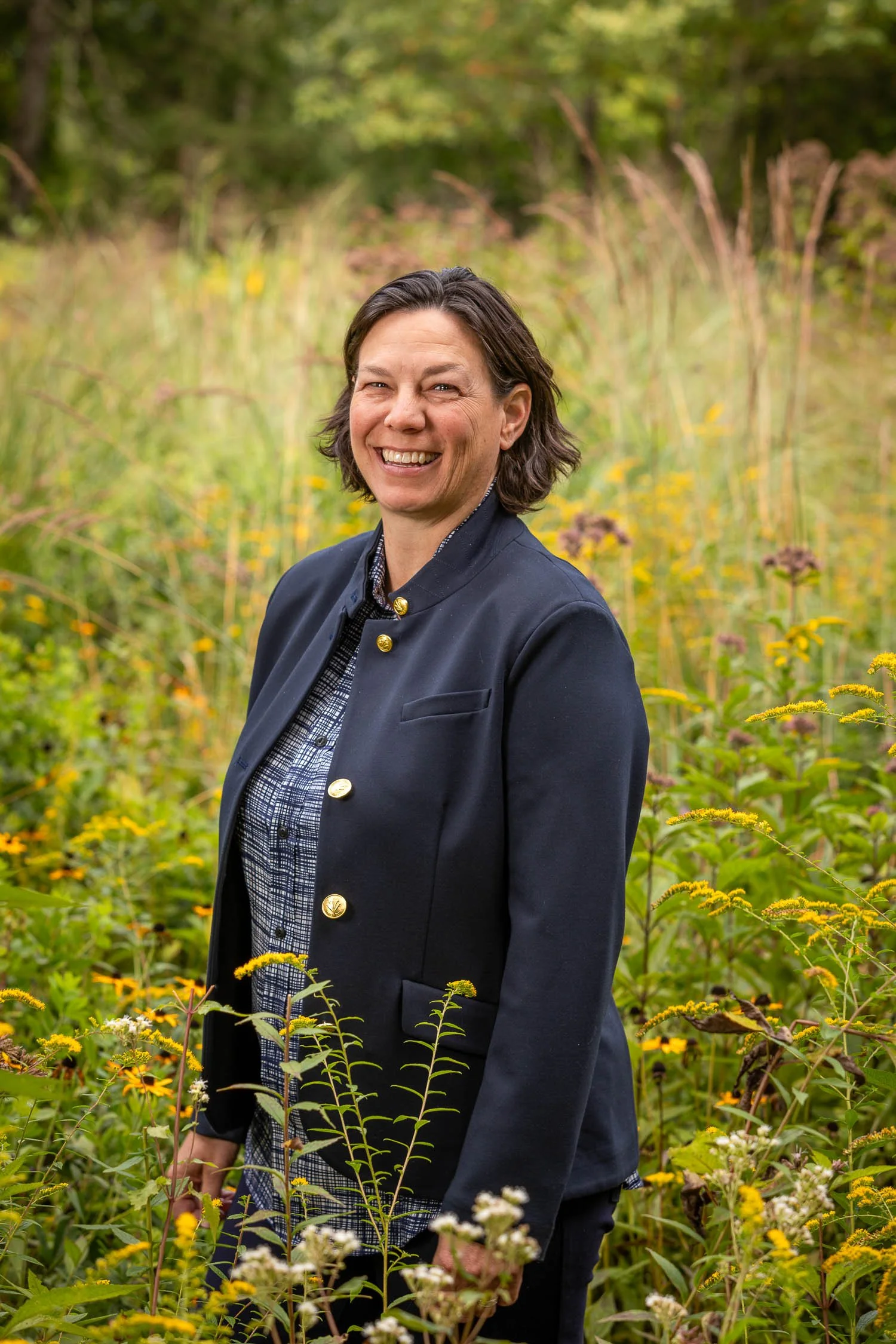KELLY HOLDBROOKS BIO
With decades of experience in Western North Carolina’s vast horticulture, Kelly Holdbrooks demonstrates her passion for fostering human connection with nature in everything she does. For more than a decade as executive director of Southern Highlands Reserve, a nonprofit native plant garden and research center on Toxaway Mountain, Kelly has built a network of conservationists and advocates for preserving the unique ecosystem of the Southern Appalachian Mountains. Kelly’s research in experiential methods and the humanism of nature earned her a master’s degree in landscape architecture, with honors, from the College of Environment and Design at the University of Georgia. She also earned bachelor’s degrees in international studies and political science from Rhodes College and was a three-sport NCAA athlete. She is a founding member of the Southern Appalachian Spruce Restoration Initiative (SASRI), a public-private partnership working to restore the second most endangered ecosystem in the United States, the high elevation spruce-fir forests of the Southern Blue Ridge. She is a member of the Red Spruce Technical Advisory Board (RSTAB), headed by The Nature Conservancy, to make recommendations to the U.S. Forest Service for their regional planning efforts. She also participates in the quarterly All Lands Meeting held by the U.S. Forest Service to develop a long-term collaborative plan for natural resource conservation across Region 8. Kelly enjoys hiking, gardening, yoga, and playing in nature with her family. She is proud to call Western North Carolina her home.
You can learn more about Kelly and Southern Highlands Reserve by visiting their website and Instagram @southern_highlands_reserve.
SHOW NOTES
How Kelly's childhood in Tennessee and family garden experiences ignited her love for plants
Transitioning from a degree in political science to working in landscaping and pursuing landscape architecture
Choosing to work manual labor jobs in Asheville to gain hands-on horticultural experience
The importance of trusting your gut and following passion over societal expectations
A serendipitous encounter in a restaurant that led to discovering Southern Highlands Reserve
Driving up Toxaway Mountain for the first time and feeling an immediate connection to the site
The founding story of Southern Highlands Reserve by Robert and Betty Balentine and how land once slated for development became a conservation easement
Surveying the land to understand its ecological significance and formally establishing the Reserve
Protecting spray cliff waterfall communities that would’ve been lost to development
The significance of the endemic Rhododendron vaseyi (pink-shell azalea) population on the property
The small team and key staff members that help maintain and grow the Reserve’s mission
Projects focused on conserving plants of the Southern Blue Ridge and contributing to broader biodiversity goals
Collaborating on wetland restoration in Great Smoky Mountains National Park and successful native plant propagation
Partnering with Atlanta Botanical Garden to germinate Torreya taxifolia (Florida torreya) seeds using biochar, despite challenges with squirrels
Biochar’s surprising success in aiding seed germination and growth in experimental trials
Contributing to the Southern Appalachian Spruce Restoration Initiative (SASRI)
The red spruce restoration work and growing tall plugs for underplanting in deciduous forests
The unique relationship between flying squirrels and red spruce trees
Observing a truffle firsthand while working with biologists on spruce habitat
An overview of Kelly’s favorite parts of Southern Highlands Reserve
Highlighting the Wildflower Labyrinth and pond garden room as especially meaningful and ecologically rich
Advocating for careful observation of landscapes through different conditions as the foundation for conservation
The design approach of “don’t mess it up” and “polish the stone” guiding garden development
Gary Smith’s original design and support for adapting plantings in response to climate change
How conservation is gardening and really observing a space
Emphasizing the long-term nature of conservation and the importance of partnerships
Personal experience transforming a yard from exotic invasives to native biodiversity
The role home gardens and even green roofs can play in conservation efforts
Seeing dramatic increases in biodiversity in her own yard after going chemical-free for eight years
Explaining assisted migration as a response to climate change for isolated species
Reflecting on a 2013 biodiversity survey that showed greater diversity in cultivated garden areas than surrounding wild areas
How added water features and human care increased biodiversity in garden rooms
Finding inspiration from nature
Rebuilding after Hurricane Helene and observing its devastating effects on Western North Carolina
The emotional toll of the storm and the human response to come together and support one another
Partnering with US Forest Service to assess storm damage and plan targeted restoration efforts
Managing stormwater as a critical concern in mountain environments and beyond
Building a new greenhouse designed to increase red spruce production and improve visitor experience
Installing extensive green infrastructure like rain gardens, bogs, and French drains to manage runoff
The greenhouse project successfully withstanding Hurricane Helene's stormwater test
Gratitude to funders and volunteers who made the greenhouse and other efforts possible
Finding creative flow through hands-on gardening and spending time in the landscape
Favorite go-to books Wildflowers of Tennessee, the Ohio Valley, and the Southern Appalachians by Dennis Horn, Tavia Cathcart, Thomas Hemmerly, and David Duhl and Planting in a Post-Wild World by Thomas Rainer and Claudia West
Dispelling the myth that everyone has the capacity to have a green thumb with the right mindset
Excitement about a newly constructed mountain bog garden showcasing rare and endangered species
Thoughts on how artists and gardeners are deeply connected through slow, creative processes
How to propagate more gardeners and conservation by choosing connection, compassion, and curiosity over division
You can learn more about Kelly and Southern Highlands Reserve by visiting their website and Instagram @southern_highlands_reserve.









